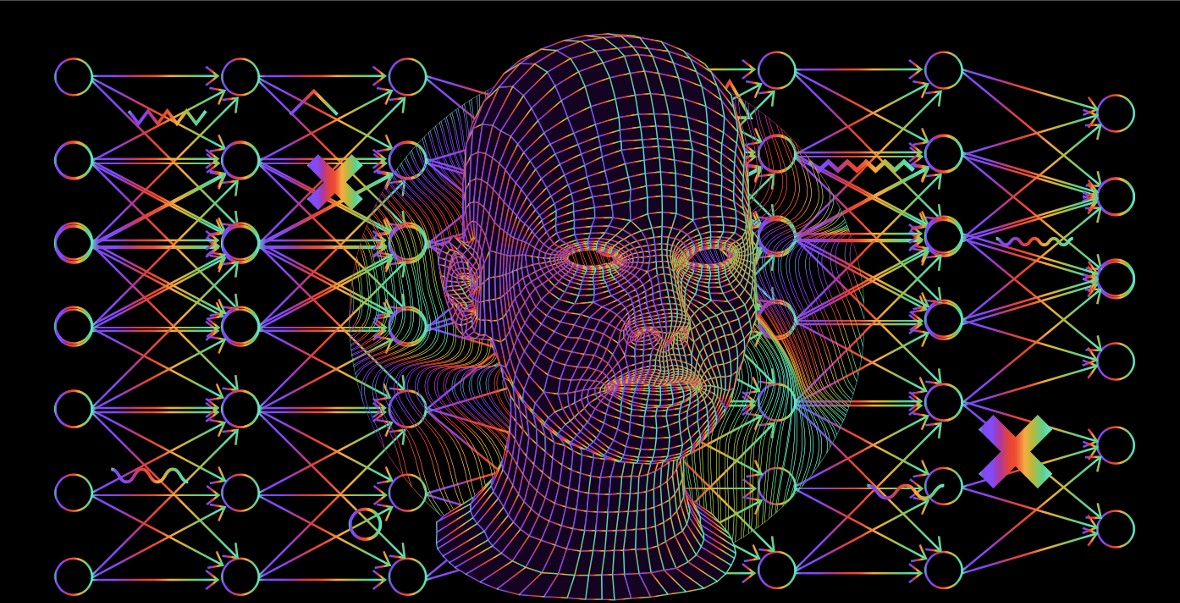Artificial intelligence (AI) has soared in popularity over the last decade. Businesses have unlocked several use cases that deliver efficiency improvements and innovations.
But implementing AI is not a walk in the park. Most AI projects do not go beyond the proof-of-concept stage. 87% of AI models never go to production. A majority of projects in production fail or don’t deliver the expected results, with enterprise money going down the drain.
There are many causes for AI failure. A primary cause is faulty AI models, which stems from a lack of proper understanding of AI and how to develop AI models.
AI modelling is of two types: rule-based modelling and learning-based modelling.
What is the rule-based approach to AI?
Rule-based AI models work based on the predetermined rules set by the developers. The developers train the algorithms using human-coded rules and facts. The code comprises ‘if-then’ statements on a cause-effect methodology. The programmer specifies predetermined outcomes for different eventualities.
Rule-based AI models are simple to set up and deliver output with much higher accuracy and precision than humans do. These models are deterministic and operate well with basic data and information.
The rule-based approach is not scalable. They only perform the programmed tasks and functions and nothing else.
Rule-based modelling suits projects that involve small data sets and simple rules. Common use case categories include:
- Routine, repetitive processes with only a few decisions. For instance, fault analysis, trigger-based email routing, and a basic search.
- Advanced automation, such as robotic process automation (RPA), to handle routine processes.
- Tasks and processes that require strict conformity to rules and processes with zero error tolerance. For instance, finance processing and medical diagnosis tasks.
What is the learning-based approach to AI?
The learning-based AI model, also known as machine-learning AI, is the more powerful, but also the more complex model. Here, the developers feed data to the machine and the machine discovers patterns, relationships, and trends. The machine learning systems define their own rule sets, based on the fed data. The system identifies and uses a set of relational rules based on the knowledge captured by the system. Human programmers have no role in defining the rules or controlling them. They may only control the rules indirectly, through the data.
Machine Learning AI adopts a probabilistic approach that factors in variations. The system is nimble and transforms data or value through mutable coding languages. The algorithm learns by itself, based on the relationships and patterns in the transactional data, and decisions get better every transaction. These models also evolve and adapt when it encounters newer information. The more data fed into the system, the more accurate the output.
Machine learning AI addresses the limitations of rule-based systems. Machine learning models are scalable. Training large, complex datasets becomes easy. These AI models suit large projects with huge data volumes, and with multiple factors and indefinite variants. Some popular use cases include e-commerce recommendations, lead qualifications, and automated support responses. The best examples of machine learning AI in action are YouTube and Netflix auto-suggestions. The algorithms learn from user activity to understand preferences and suggest relevant content.

The pros and cons of both approaches
Both the rule-based approach and the machine learning approaches have their pros and cons.
The major advantages of the rule-based approach to AI are:
- Ease of interpretation. Keeping the rules limited makes understanding the underlying logic behind any decision easy. Human executives, customers and other stakeholders understand how the model makes predictions.
- Speed and efficiency: Rules-based systems deliver information quickly. The limited parameters enable speedy results.
- Greater control. Decision makers have more control over the algorithm. They can change the algorithm to reflect changes in business decisions and strategies easily.
- Consistency. Since human programmers fix the rules, the algorithm does not deviate into unexpected patterns. There is consistency in the AI decisions from the word go.
The disadvantage of the rule-based approach is poor prediction quality. Human brains setting the rules negate one of the biggest rationales for deploying AI. in the first place
Rule-based AI models are not scalable. These models perform only the programmed tasks, and do not work for complex scenarios. But such characteristics make rule-based algorithms easy to deploy and operate.
As a general rule, the disadvantages of the rule-based approach are the advantage of the learning-based method. Since machine learning AI does not confine to the fed rules, it has a wider scope and is scalable.
When the algorithm discovers relationships and patterns by itself, there is greater accuracy. The decisions have higher quality, and remain more attuned to the ground situation. The learning-based approach overcomes cognitive bias and limitations that stifle the human mind. But the algorithm efficacy and the extent to which it is free of bias depends on the data fed into it upfront. If the initial data has bias or errors, such mistakes reinforce and accentuate over time.
The advantages of the rule-based approach turn into disadvantages of the learning-based approach.
As the algorithm learns and decides by itself, human decision-makers have little control over the output. It becomes difficult to track the patterns and decipher the underlying rationale of the decision. The output may become inconsistent depending on the quality of the data.
Which approach is the best?
Of the two models, one is not better or superior to the other. The better model, which delivers the best ROI and meets enterprise objectives, depends on the use case and the type of data.
Rules-based Artificial Intelligence suits projects with small data sets and simple rules. Machine learning AI suits projects with large data volumes, and multiple situations or outcomes.
Rule-based Artificial Intelligence is better for data with categorical features. Numeric features require clear thresholds, which creates difficulties for rule formulation. Machine learning AI do not suffer from such limitations.
Rule-based Artificial Intelligence suits structured workflows that require certainty and precision. Machine learning Artificial Intelligence enables prediction. It fits in well for fluid situations and environments that change fast.
Sometimes, it becomes expedient to use both rule-based AI and machine learning AI in tandem to derive optimal value. Combining the two approaches gives the “best of both worlds” and makes up for the shortfall of each system.
For enterprises starting their Artificial Intelligence journey, the best approach is to identify rule-based Artificial Intelligence projects first. They may explore the more complex machine learning AI after getting familiar with Artificial Intelligence. Machine learning AI offers excellent potential but is also very risky. Rule-based Artificial Intelligence is less risky to implement. Opting for rule-based processes first spares enterprises from enormous costs and resources upfront.












